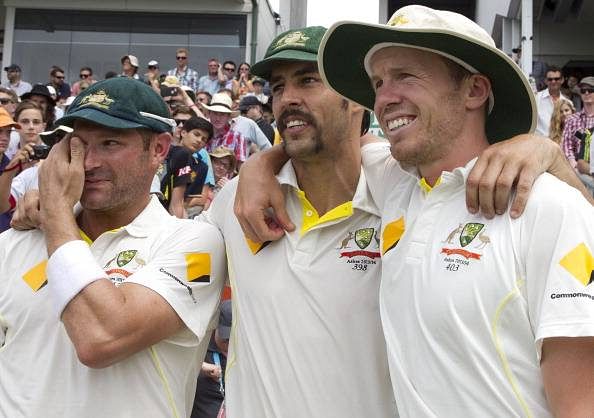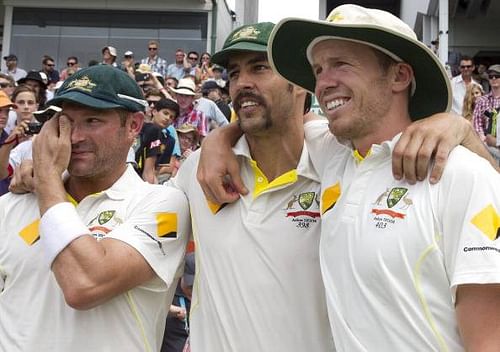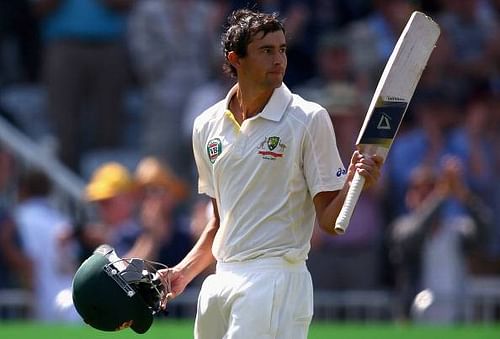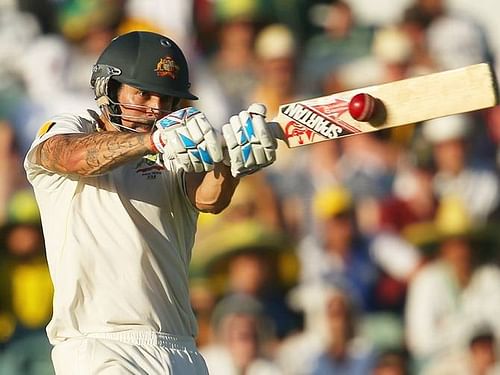
A tail from down under

If the conditions are tough and the batsmen aren't good enough, who ya gonna call? The Australian tail-enders.
Well, let's be honest here. In the last couple of years, if not more, the consistent contributions from the lower order has been one of the principle keys to Australia’s success in Tests, home and away. The Australian tail has made a habit of bailing out the always vulnerable top and an often frail middle order, regardless of Steve Smith's transcendent 18 months. They wag to the left. They wag to the right. The Australian tail can wag, alright!
| Team | Matches | Runs | Average | 100 | 50 |
|---|---|---|---|---|---|
| Australia | 54 | 4443 | 19.06 | 0 | 19 |
| England | 58 | 4181 | 17.20 | 3 | 11 |
| India | 51 | 4059 | 17.34 | 5 | 14 |
| New Zealand | 42 | 3570 | 18.21 | 3 | 8 |
| West Indies | 44 | 3157 | 14.96 | 2 | 10 |
| Sri Lanka | 44 | 2638 | 13.88 | 1 | 6 |
| South Africa | 38 | 2608 | 19.75 | 1 | 10 |
| Pakistan | 44 | 2147 | 12.48 | 0 | 7 |
| Bangladesh | 23 | 1732 | 15.74 | 2 | 2 |
| Zimbabwe | 14 | 881 | 10.24 | 0 | 0 |
In 54 Tests in the last five years, the Australian lower order has scored 4443 runs at an average of more than 19. The Australian lower order have been involved in more fifty-plus partnerships than any other team.
Only South Africa has a slightly better average than the Australian lower order and they, deservedly, are the best in the business. But the reason behind their number one Test ranking has more to do with their consistent performances in Tests, overseas and home. Their top and, particularly, middle-order has more often than not delivered for them, regardless of the batting conditions. One can't say the same for Australia and hence, their lower order has had to work on their batting abilities.

During the 2013 Ashes in English shores, who could forget Ashton Agar's fearless stand of 163 with Phillip Hughes, which broke two world records at the time but two short of a deserved personal landmark?
In the following Australian summer, other than Mitchell "Mo" Johnson's terrorising spells with the ball, Haddin's frequent collaborations with the tail were equally important in regaining the coveted urn. More recently in the Caribbean, Adam Voges did the same with the ever-reliable Australian tail. And now, with yet another Ashes on the horizon, one wonders how often they will be called for to bail the batsmen out again.
| Opposition | Matches | Runs | Average | 100 | 50 |
|---|---|---|---|---|---|
| v England | 58 | 5003 | 17.31 | 2 | 20 |
| v India | 51 | 4211 | 19.67 | 1 | 20 |
| v Pakistan | 44 | 3668 | 16.74 | 2 | 12 |
| v Australia | 54 | 3282 | 12.92 | 1 | 7 |
| v West Indies | 44 | 3054 | 17.85 | 4 | 7 |
| v New Zealand | 42 | 2975 | 16.80 | 4 | 7 |
| v Sri Lanka | 44 | 2767 | 16.76 | 1 | 6 |
| v South Africa | 38 | 2472 | 13.29 | 0 | 4 |
| v Bangladesh | 23 | 1113 | 15.24 | 2 | 3 |
| v Zimbabwe | 14 | 871 | 14.76 | 0 | 1 |
But here's an interesting insight. Though, while batting, the Australian tail-enders are consistently scoring runs, while bowling, they also ensure their counterparts don't. They have only conceded 3282 runs at less than 13, the least among all Test-playing nations. They blow away the opposition's tail with relative ease. Be it with Johnson's short ball intimidation, Ryan Harris' pace and control, Starc's highly potent yorkers or even Lyon's guileful loopy off spin.

What Australia and South Africa do in an effective manner that England and India don't, is getting rid of the opposition's tail. It has been one of England and India’s perennial struggles and has often hurt them. On several occasions, when they have had the opposition staring at a considerable run deficit, they have let them get away. This is primarily due to a lack of sufficient planning.
Even when a certain plan doesn't seem to fetch them the desired results, they continue to persist with it. Recently, during India's tour to Australia, India had Australia gaze at a deficit of more than 150 runs in Brisbane. What followed was absolute chaos and mayhem due to a fine counter-attack from Mitchell Johnson due to India’s persistence with the short ball attack. They stuck with it until he made a blistering 88 and changed the course of the match.
Rather than moving onto a different plan, they stuck with Plan A and were left to anguish. If Australia were in a similar situation where they had the opposition by the throat, Clarke and his men would go for the kill without batting an eye. And that is the difference between a good team and a great team.
With the Ashes all set to begin in five days time, one wonders how much of an impact the batting performances of the teams' lower order will have on the series scoreline. Of course, from England's perspective, if they want to regain that historic urn, they better run through the gritty Australian tail.